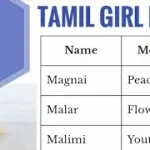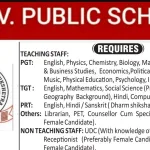The DAV Class 8 board exams are an important step for students. Here we are going to provide you dav class 8 board question paper with answers, subject exam pattern.
These exams test knowledge in subjects like Science, Social Science, Hindi, and Sanskrit. Understanding the exam pattern and practicing sample questions can help students prepare well and succeed in their exams.
Subjects Covered:
- English
- Mathematics
- Science
- Social Science
- Hindi
- Sanskrit
Exam Pattern Overview
The DAV Class 8 exams typically follow a structured pattern. Each subject usually includes a combination of different types of questions such as multiple-choice questions (MCQs), short answer questions, long answer questions, and sometimes diagram-based or practical questions. Understanding this pattern helps students to know what to expect and how to prepare accordingly.
Types of Questions Asked
- Multiple-Choice Questions (MCQs): These questions are objective in nature, providing four options from which the correct one must be chosen.
- Short Answer Questions: These require concise answers, often within a few lines.
- Long Answer Questions: These demand detailed explanations and can be a paragraph or more in length.
- Diagram-Based Questions: Common in subjects like Science, these require students to label or explain parts of a diagram.
- Practical Questions: Usually seen in Science and sometimes Mathematics, these require application of concepts to practical scenarios.
Let’s dive into each subject, providing ten example questions and answers along with tips on what to focus on during your preparation.
English
Exam Pattern:
- Reading Comprehension
- Writing Skills (e.g., essays, letters)
- Grammar
- Literature
Example Questions and Answers:
- Reading Comprehension:
- Question: Read the passage and answer the following: What is the main theme of the passage?
- Answer: The main theme is the importance of preserving natural habitats.
- Grammar:
- Question: Identify the verb in the sentence: “She was reading a book.”
- Answer: The verb is “was reading.”
- Literature:
- Question: Who is the protagonist in the story “The Adventures of Tom Sawyer”?
- Answer: The protagonist is Tom Sawyer.
- Writing Skills:
- Question: Write a letter to your friend describing your experience at a summer camp.
- Answer: (Model answer format with introduction, body, and conclusion).
- Comprehension:
- Question: What can be inferred about the author’s opinion on climate change?
- Answer: The author believes that climate change is a serious issue that needs immediate attention.
- Grammar:
- Question: Fill in the blanks: “She ______ (go) to the market every Saturday.”
- Answer: “goes”
- Literature:
- Question: Describe the character of Atticus Finch in “To Kill a Mockingbird.”
- Answer: Atticus Finch is depicted as a just, fair, and moral person.
- Writing Skills:
- Question: Write a short essay on the importance of healthy eating.
- Answer: (Model essay with introduction, main points, and conclusion).
- Grammar:
- Question: Correct the sentence: “She don’t like to read books.”
- Answer: “She doesn’t like to read books.”
- Comprehension:
- Question: What does the author suggest about the future of renewable energy?
- Answer: The author suggests that renewable energy has a promising future and will become more widely used.
Mathematics
Exam Pattern:
- MCQs
- Short Answer Questions
- Long Answer Questions
- Problem-Solving and Application-Based Questions
Example Questions and Answers:
- Algebra:
- Question: Solve for x: 2x + 3 = 11.
- Answer: x = 4.
- Geometry:
- Question: What is the area of a triangle with base 5 cm and height 10 cm?
- Answer: Area = 0.5 * base * height = 0.5 * 5 * 10 = 25 cm².
- Arithmetic:
- Question: Calculate the simple interest for a principal amount of ₹1000 at a rate of 5% per annum for 2 years.
- Answer: Simple Interest = (Principal * Rate * Time) / 100 = (1000 * 5 * 2) / 100 = ₹100.
- Trigonometry:
- Question: What is the value of sin 30°?
- Answer: sin 30° = 0.5.
- Probability:
- Question: What is the probability of rolling a 4 on a standard six-sided die?
- Answer: Probability = 1/6.
- Statistics:
- Question: Find the mean of the numbers: 2, 4, 6, 8, 10.
- Answer: Mean = (2 + 4 + 6 + 8 + 10) / 5 = 30 / 5 = 6.
- Number Systems:
- Question: Convert the decimal number 0.75 to a fraction.
- Answer: 0.75 = 75/100 = 3/4.
- Mensuration:
- Question: What is the volume of a cube with side length 3 cm?
- Answer: Volume = side³ = 3³ = 27 cm³.
- Coordinate Geometry:
- Question: What are the coordinates of the midpoint of the line segment joining (2, 3) and (4, 7)?
- Answer: Midpoint = ((2+4)/2, (3+7)/2) = (3, 5).
- Linear Equations:
- Question: Solve the system of equations: x + y = 5 and x – y = 1.
- Answer: Adding the equations: 2x = 6 → x = 3. Substituting x into x + y = 5: 3 + y = 5 → y = 2. Therefore, x = 3, y =
Science
Science is a fascinating subject that combines theoretical concepts with practical understanding. The DAV Class 8 Science exam tests students on various topics, including Physics, Chemistry, and Biology.
Exam Pattern for Science
The Science exam typically comprises multiple-choice questions (MCQs), short answer questions, and long answer questions. The question paper is designed to evaluate students’ understanding, analytical skills, and ability to apply concepts.
- MCQs: 10 questions, 1 mark each
- Short Answer Questions: 10 questions, 2 marks each
- Long Answer Questions: 5 questions, 4 marks each
Types of Questions
- Multiple-Choice Questions (MCQs): Test basic concepts and definitions.
- Short Answer Questions: Require brief explanations or calculations.
- Long Answer Questions: Involve detailed explanations, diagrams, and problem-solving.
Sample Questions and Answers for Science
- What is the chemical formula of water?
- Answer: H₂O
- Define photosynthesis.
- Answer: Photosynthesis is the process by which green plants use sunlight to synthesize food from carbon dioxide and water.
- What are Newton’s three laws of motion?
- Answer:
- An object at rest will stay at rest, and an object in motion will stay in motion unless acted upon by an external force.
- The acceleration of an object is directly proportional to the net force acting upon it and inversely proportional to its mass.
- For every action, there is an equal and opposite reaction.
- Answer:
- What is the pH scale?
- Answer: The pH scale measures the acidity or alkalinity of a solution, ranging from 0 to 14.
- Name the three states of matter.
- Answer: Solid, liquid, and gas.
- Explain the term ‘ecosystem’.
- Answer: An ecosystem is a community of living organisms interacting with their physical environment.
- What is the function of the human heart?
- Answer: The human heart pumps blood throughout the body, supplying oxygen and nutrients to tissues and removing carbon dioxide and other wastes.
- Differentiate between renewable and non-renewable energy sources.
- Answer: Renewable energy sources can be replenished naturally (e.g., solar, wind), while non-renewable energy sources are finite and cannot be replenished once used (e.g., coal, oil).
- What are enzymes?
- Answer: Enzymes are biological catalysts that speed up chemical reactions in living organisms.
- Define the term ‘molecule’.
- Answer: A molecule is a group of two or more atoms held together by chemical bonds.
Social Science
Social Science encompasses various subjects, including History, Geography, and Civics. It aims to develop students’ understanding of human societies, their history, and the environment.
Exam Pattern for Social Science
The Social Science exam consists of MCQs, short answer questions, and long answer questions.
- MCQs: 10 questions, 1 mark each
- Short Answer Questions: 10 questions, 2 marks each
- Long Answer Questions: 5 questions, 4 marks each
Types of Questions
- MCQs: Test basic historical dates, geographical locations, and civics concepts.
- Short Answer Questions: Require brief descriptions or explanations.
- Long Answer Questions: Involve detailed descriptions, causes and effects, and critical thinking.
Sample Questions and Answers for Social Science
- Who was the first President of India?
- Answer: Dr. Rajendra Prasad
- What is the capital of France?
- Answer: Paris
- Define democracy.
- Answer: Democracy is a system of government where the citizens exercise power by voting.
- What is the significance of the Indus Valley Civilization?
- Answer: The Indus Valley Civilization is significant for its advanced urban planning, architecture, and social organization.
- Name the longest river in the world.
- Answer: The Nile River
- What is the role of the United Nations?
- Answer: The United Nations works to promote international cooperation, peace, and security, and to address global issues such as human rights and development.
- Explain the term ‘global warming’.
- Answer: Global warming refers to the long-term increase in Earth’s average surface temperature due to human activities, particularly the emission of greenhouse gases.
- What was the main cause of World War I?
- Answer: The main cause of World War I was the assassination of Archduke Franz Ferdinand of Austria, which triggered a series of alliances and conflicts.
- Define ‘latitude’ and ‘longitude’.
- Answer: Latitude refers to the horizontal lines that measure the distance north or south of the Equator, while longitude refers to the vertical lines that measure the distance east or west of the Prime Meridian.
- What is the significance of the Indian National Congress?
- Answer: The Indian National Congress played a crucial role in India’s struggle for independence from British rule.
Hindi
Hindi is an essential language subject that helps students develop their reading, writing, and comprehension skills. The exam tests their understanding of grammar, literature, and composition.
Exam Pattern for Hindi
The Hindi exam typically includes reading comprehension, grammar, and writing sections.
- Reading Comprehension: 2 passages, 10 marks each
- Grammar: 20 marks
- Writing (Essay/Letter/Story): 20 marks
Types of Questions
- Reading Comprehension: Based on given passages.
- Grammar: Questions on grammar rules, sentence correction, and usage.
- Writing: Essay, letter writing, and story writing.
Sample Questions and Answers for Hindi
- प्रत्यय क्या है? उदाहरण दीजिए।
- उत्तर: जो शब्दांश किसी शब्द के अंत में जुड़कर उसका अर्थ बदल देते हैं, प्रत्यय कहलाते हैं। उदाहरण: कृषक (कृषि + क), शिक्षित (शिक्षा + इत)।
- महाभारत के रचयिता कौन हैं?
- उत्तर: महाभारत के रचयिता महर्षि वेदव्यास हैं।
- विलोम शब्द लिखिए: अंधकार
- उत्तर: प्रकाश
- ‘गुरु’ शब्द का बहुवचन क्या है?
- उत्तर: गुरुजन
- रामचरितमानस के रचयिता कौन हैं?
- उत्तर: गोस्वामी तुलसीदास
- संस्कृत का वाक्य हिंदी में अनुवाद करें: ‘माता पिता सर्वदा पूजनीयौ।’
- उत्तर: माता पिता सदैव पूजनीय हैं।
- ‘अतिथि’ शब्द का पर्यायवाची शब्द लिखिए।
- उत्तर: मेहमान
- नीचे दिए गए वाक्य में से अशुद्ध वाक्य चुनकर सही करें: ‘रामने पुस्तक पढ़ा।’
- उत्तर: अशुद्ध वाक्य: रामने पुस्तक पढ़ा। सही वाक्य: राम ने पुस्तक पढ़ी।
- भाषा की परिभाषा लिखिए।
- उत्तर: भाषा वह माध्यम है जिसके द्वारा हम अपने विचारों और भावनाओं को व्यक्त करते हैं।
- निबंध लिखें: ‘मेरा प्रिय त्योहार’।
- उत्तर: (छात्र स्वयं निबंध लिख सकते हैं, यहां एक नमूना है)
“मेरा प्रिय त्योहार” भारत त्योहारों का देश है। यहाँ अनेक त्योहार मनाए जाते हैं। इनमें से मेरा प्रिय त्योहार दिवाली है। दिवाली को दीपावली भी कहा जाता है। यह त्योहार बुराई पर अच्छाई की जीत का प्रतीक है। इस दिन लोग घरों को साफ-सफाई करते हैं, दीयों और रंगोली से सजाते हैं। रात को लक्ष्मी पूजन होता है और पटाखे छोड़े जाते हैं। मिठाइयाँ बाँटी जाती हैं और एक-दूसरे को शुभकामनाएँ दी जाती हैं। मुझे यह त्योहार बहुत पसंद है क्योंकि इस दिन चारों ओर रोशनी ही रोशनी होती है और वातावरण खुशियों से भरा होता है।
Sanskrit
Sanskrit, the ancient language of India, is taught to develop students’ understanding of traditional texts and enhance their linguistic skills.
Exam Pattern for Sanskrit
The Sanskrit exam includes reading comprehension, grammar, and translation sections.
- Reading Comprehension: 2 passages, 10 marks each
- Grammar: 20 marks
- Translation: 20 marks
Types of Questions
- Reading Comprehension: Based on given passages.
- Grammar: Questions on grammar rules, sentence formation, and usage.
- Translation: Translating sentences from Sanskrit to Hindi or English and vice versa.
Sample Questions and Answers for Sanskrit
- ‘रामः ग्रामं गच्छति’ का हिंदी में अनुवाद करें।
- उत्तर: राम गाँव जाता है।
- ‘गायत्री’ शब्द का विभक्ति रूप लिखिए।
- उत्तर: गायत्री, गायत्र्या, गायत्र्याः, गायत्र्यै, गायत्र्या, गायत्र्याम्
- ‘बालकः’ शब्द का द्विवचन रूप लिखिए।
- उत्तर: बालकौ
- ‘पठति’ धातु का लोट् लकार प्रथम पुरुष एकवचन रूप लिखिए।
- उत्तर: पठतु
- ‘अहम्’ का द्वितीया विभक्ति एकवचन रूप लिखिए।
- उत्तर: माम्
- ‘गम’ धातु का लट् लकार मध्यम पुरुष बहुवचन रूप लिखिए।
- उत्तर: गच्छथ
- नीचे दिए गए वाक्य का संस्कृत में अनुवाद करें: ‘वह स्कूल जाता है।’
- उत्तर: सः विद्यालयं गच्छति।
- संस्कृत में संख्याएँ 1 से 10 तक लिखिए।
- उत्तर: एकम्, द्वे, त्रीणि, चत्वारि, पञ्च, षट्, सप्त, अष्ट, नव, दश
- ‘विद्या’ शब्द का तत्सम शब्द क्या है?
- उत्तर: शिक्षा
- ‘माता’ शब्द का तृतीया विभक्ति बहुवचन रूप लिखिए।
- उत्तर: मातृभिः
Preparing for the DAV Class 8 board exams requires understanding the exam pattern, types of questions, and practicing with sample questions. This guide has provided comprehensive details and examples for Science, Social Science, Hindi, and Sanskrit. Best of luck for your paper!
Latest Posts
- Step-by-step guide to download and apply for jee mains admit card 202
- Comprehensive 2025 government holidays and recruitment details for job seekers
- JEE Mains Admit Card 2025: Your Step-by-Step Guide to Downloading the Hall Ticket
- Everything You Need to Know About 2025 Government Holidays Recruitment
- Comprehensive Guide to rrb d group recruitment 2025 – Eligibility, Vacancies, and Application
- Detailed guide to nps trust recruitment 2025 vacancies, eligibility and apply process
- Comprehensive guide to hpcl recruitment 2025 notification, vacancies, and application process
- ignou bed admission 2025 complete recruitment guide with eligibility and process
- Comprehensive Guide to Indian Army Agniveer Recruitment 2025 Notification and Jobs
- Everything You Must Know About CBSE Board Exams 2025 Changes & New Rules






